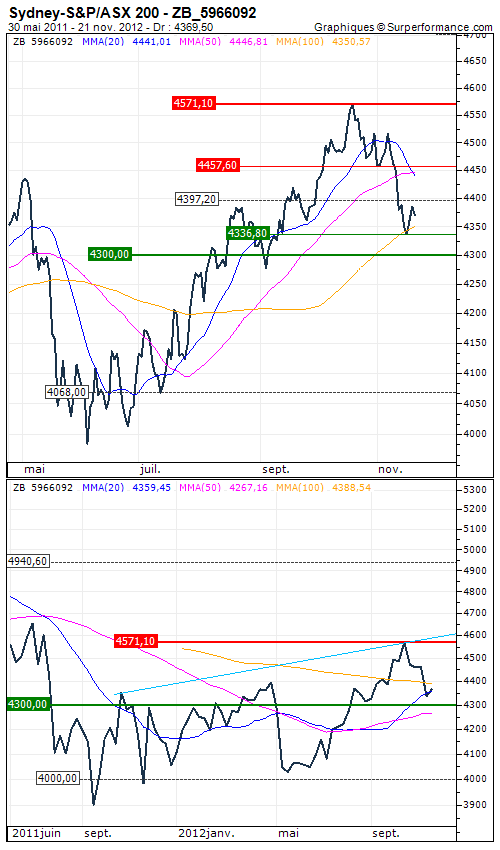S&P/ASX 200 : Is Australian economy in decline ?
By Rodolphe Steffan
The RBA (Reserve Bank of Australia) surprised markets early November by observing the status quo on its monetary policy, it said last week that further easing would be appropriate in the future. In fact Members of the Bank noted a slowing of the economy according to lower indicators than the ones released in the previous quarter.
Meanwhile, the Australian Treasurer, Wayne Swan, has lowered its growth forecast for the year 2012/2013. He is now expecting an increase of 2.5% of GDP against 3.25% earlier. According to him, the prospect of low global growth and lower prices of raw materials will "slow the recovery of our revenues from taxes". In addition, the strength of the Australian dollar tends to weigh heavily on workforce as the unemployment rate rose to its highest level in three years in November to 5.7%. Australia is about to face more difficult days and investors remain concerned by external imbalances.
Technically, the short-term trend is now bearish in daily data below 4400/4450 points which refers to the 20-day moving average. The rebound is expected to continue in the short term up to levels where the most aggressive traders could open new short positions to target a new test of the 4300/4335 support. A weekly break below this level would signal the beginning of a key bearish dynamic in the medium term. Conversely, a positive reaction on these levels will allow the Australian index continue its evolution in the weekly trading range 4300/4550 points. The bearish scenario can be traded using future market S&P / ASX 200 Index Futures (code: SPI).


 S&P/ASX 200
S&P/ASX 200 







